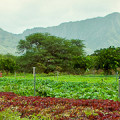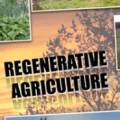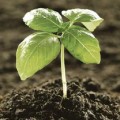Far too often the media glosses over bigger issues in order to retain their unbiased standpoint. In an attempt to avoid making broad generalizations or looking at the implications of the stock standard news piece. In the New Scientist this week there was a brief piece looking at land use for crops and pastures. From this small snippet we learn that more than a third of the Earth not comprised of ice or water is now being used for farming. And with the push for eco-friendly biofuels, in particular the demand for soya and palm oil, more land can be expected to be converted for farming in the future. And that’s where the new ends. What wasn’t addressed were the implications for the environment, the changes in land allocation, the affects of human diet on land use and finally what can be done. Overall, this brief address becomes something easily overlooked and leaves those who take the time to read it undereducated on what’s not being said.
When looking at land division and its uses 28 million square kilometers (22 per cent) of ice-free land surface is covered in pasture and 15 million square km (12 per cent) is used to grow crops. These figures are meant to be under representative as they’re exclusive of small farms with subsistence agriculture or those located underneath forest or trees. With the inclusion of human culture to our small planet, what was once completely natural has lost every ounce of its original pristine state. Causing broad, sweeping statements like, “The escalating transformation of the world’s forests, wetlands, savannahs, waterways and other native landscapes as the biggest potential threat to human health and global sustainability.”
And as the world’s natural landscapes transform into agriculture of other human uses, we further undermine the capacity of the planets ecosystems to sustain such a burgeoning human population. These fears are nothing new. Scientists have been forecasting the troubles associated with this change in land allocation for years, but is has only been recently that people have started to listen.
However, there is still time to make the changes necessary. Going vegan or vegetarian is on that list of changes to be made. Looking more closely we’ll see that the 22 per cent of land allocated to rearing livestock produces 18 per cent of the world’s green house gases (Compared to the 12 per cent produced by passenger vehicles). This translates to one person switching from a typical Western diet to a vegan diet reducing their personal CO2 emissions by 1485 kg per year.
Vegetarian diets also use the smallest amount of land per capita, therefore committing yourself to an animal-free diet is a good start when it comes to preserving the natural environment. But whether you choose to include meat or dairy in your diet or not, be a conscious consumer. Modern agriculture practices are unsustainable with their heavy reliance on chemical pesticides so that going organic will preserve the land quality for future crops.
Next time you see a small story of seemingly little consequence challenge yourself to understand the wider implications and the story behind the news.





No Comments